Most home hobbyists measure the total ammonia via the API “Ammonia” test kit. This test kit measures both ammonia gas and ammonium ions. It is not unusual for a hobbyist to be surprised by a sudden unexpected spike in these numbers. It is not cause for concern most of the time.
Ammonia+ammonium spikes and nitrite spikes will commonly occur with an uncycled aquarium filter or just after cycling. The filter simply isn’t cycled completely and needs to complete its cycling. These types of spikes won’t be covered here. We’ll only talk here about established aquariums which have been cycled completely.
Ammonia or nitrite spikes in established aquariums can come from a lot of things, chloramine in the water supply, dead bodies of fish, dying plants, a fortified soil substrate, overfeeding, cleaning the filter media, changing the filter cartridges, just to name the main ones.

Ammonia Toxicity
It is important to note that small ammonia+ammonium spikes are harmless. It requires some surprisingly high levels of ammonia+ammonium before things get damaging to the fish.
| pH of the water | API Ammonia test in ppm | ||
|---|---|---|---|
| pH | Alert | Alarm | Toxic |
| 6.6 | 16 | 64 | 160 |
| 6.8 | 11 | 44 | 110 |
| 7.0 | 8 | 32 | 80 |
| 7.2 | 5 | 20 | 50 |
| 7.4 | 3 | 12 | 30 |
| 7.6 | 2 | 8 | 20 |
| 7.8 | 1 | 4 | 10 |
| 8.0 | 0.8 | 3 | 8 |
| 8.2 | 0.6 | 2 | 6 |
| 8.4 | 0.4 | 2 | 4 |
| 8.6 | 0.25 | 1 | 2 |
To use this chart measure the pH of the water. Find the pH in the left column. Then read across to the right. The numbers are what the API ammonia+ammonium test levels are. For instance, if one measures 7.6 pH, reading across one should be “alert ” at 2 ppm on the API ammonia+ammonium test, “alarmed” at 8 ppm (probably should do a water change) and really “alarmed ” at the toxic level of 20 (I would do a 90% water change!).
Many people will vociferously question these toxicity numbers. So if you want supporting papers on ammonia toxicity go to this link:
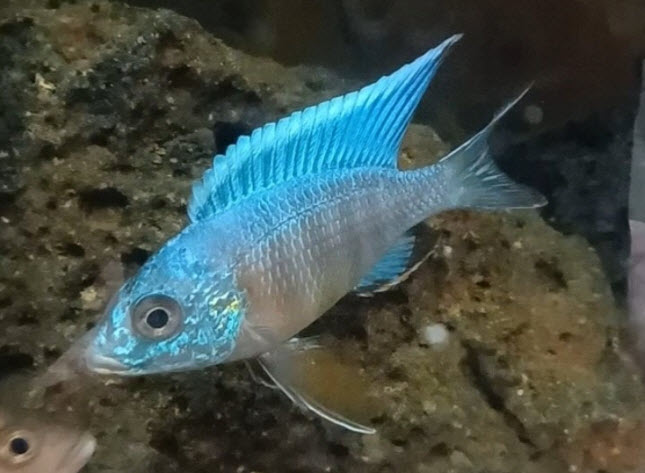
Spikes in an Established Aquarium
Ammonia and nitrite oxidation actually requires very little from a filter and the filter media. Almost anything will work after three to four months of breaking in. As Cory of Aquarium Co-op pointed out, used gym socks have been used quite successfully to oxidize ammonia so Mother Nature is very flexible and very forgiving.
But if high ammonia+ammonium levels are detected in an established tank and these level last for more than a week, there are several possible reasons for these intransigent high ammonia+ammonium levels:
- Chloramine in tap water is ammonia combined with chlorine. It gives ammonia when the water conditioner removes the chlorine. Most of the time the levels reached are low and easily handled by the filter in most tanks. Note Prime and Safe do not remove or even “temporarily detoxify” ammonia. A test was done using the test that Seachem recommends and Prime and Safe did not “detoxify the ammonia temporarily”.
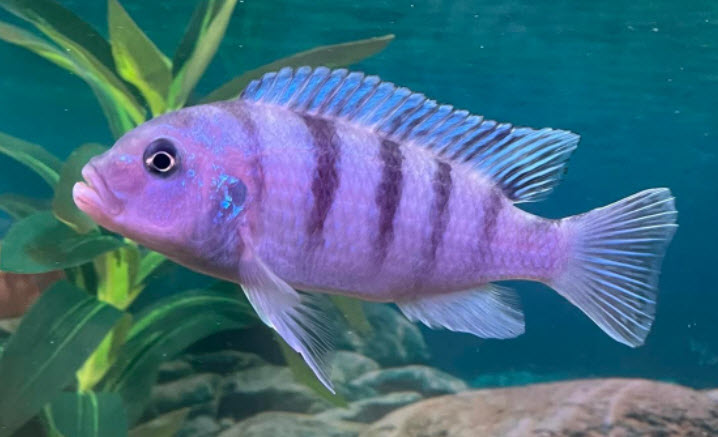
- Cleaning away most of the beneficial bacteria on a regular basis. This can be by “thoroughly cleaning” the media in a filter (or replacing Polyfil or cartridges often) like every month. When one cleans or dispose of the filter media, one is cleaning away the bacteria which oxidize ammonia. The results of this can be viewed in the following link:
- The filter is a hang-on-back with insufficient surface area to form a lot of brown “gunk”, i.e. beneficial bacteria. Information on improving a hang-on-back filter can be found at this link:
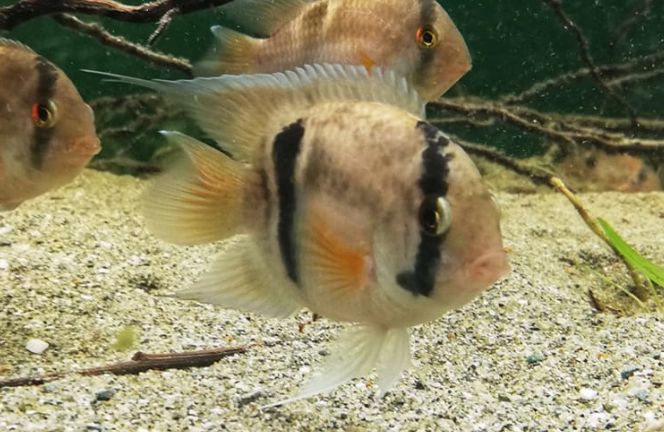
- The filter media is something like ceramic rings which can’t form enough brown gunk on their surface to filter out the ammonia. More on this at this link:
- The pH of their aquarium is too low, and the beneficial bacteria can’t do their work (like below 6.5 pH), Crushed coral, aragonite, or baking soda solve this problem. For more information click on the following link:
- Having “old tank syndrome”, where the nitrates go up, the pH goes down and the beneficial bacteria stop working. A 90% water change solves this. More information can be found at the following link:

- Ammonia test kits can go bad with time. Many kits give 0.25 ppm ammonia with distilled (ultra pure no ammonia) water. Nitrite tests are less sensitive.
- Some hobbyists rush the aquarium and put in large numbers of fish or very large fish. Both of these courses of action can overload the filter and give ammonia and/or nitrite spikes.
- And some hobbyists, especially newcomers to the hobby, overfeed their fish. This abundance of food rots and gives off ammonia which can convert to nitrite.
- And one surprisingly common cause of ammonia spikes in an established aquarium is dying plants. The plants can appear healthy but be dying. Since plants are living organisms with protein in their cells, when plants die they release ammonia.
- Sometimes people use a soil substrate in their aquarium in order to grow plants. This soil is often fortified with ammonia containing fertilizers. Because organic matter has a high cation exchange capacity this effect can last through many 100% water changes.

Generally persistent spikes of ammonia and/or nitrite in an established tank can be remedied by adding a lot more biofiltration and not cleaning the filter media till the flow slows down. An under-gravel filter, a canister or a sump are all very good options. The canister needs to be filled with a good biomedia like foam, K1 or pot scrubbers.
In some established aquariums with fish and persistent very high ammonia it is best to do something called a “fish-in” cycle. This is easy to do. Here is a link on how to do it:
Note it is very unusual to have ammonia or nitrite spikes in an aquarium which has been established for more than four months or so if the filter media has not been thoroughly cleaned or replaced on a regular basis. The colonies of beneficial bacteria keep growing even after they have completed cycling, so the amount of beneficial bacteria in a filter can be enormous. So one can clean away 95% of the beneficial bacteria and still have enough to prevent ammonia spikes. I’ve only had ammonia spikes in cycling aquariums. I’ve NEVER had a spike in an aquarium established for more than four months.
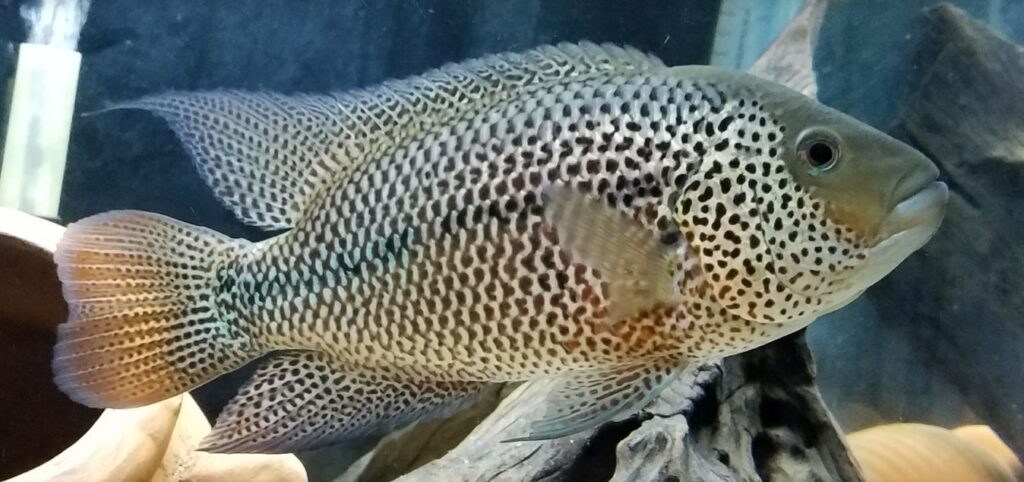
Garbage Can Water Conditioning
A technique called “garbage can water conditioning” can be used either if one has very high ammonia from chloramines out of the tap or one has very alkaline water with chloramines. It safely removes both the chlorine and the ammonia from water.
Lately many people have been reporting 4 to 8 ppm of ammonia straight out of the tap from chloramines. It appears there has been a change in the way water utilities are killing the biofilm which forms in water lines. This 4 to 8 ppm of ammonia needs to be neutralized by Mother Nature if the pH is high. This can be done by doing something called “garbage can water conditioning”.
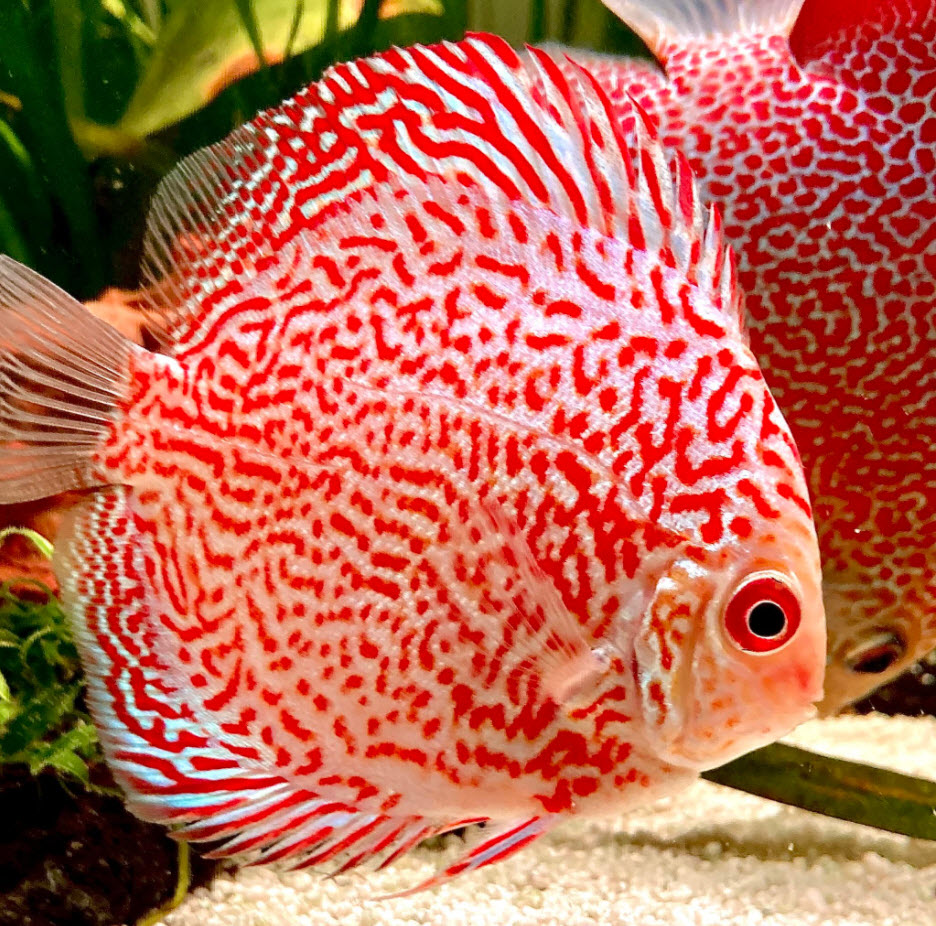
If one has high ammonia coming out of the tap and/or high pH use a greater than 24 hour residence time in a water conditioning container (like a plastic tote, pail or garbage bin) with a functioning biofilter to remove the ammonia.
To do this take a plastic tote, pail or garbage bin and fill it full of the water. If you have a fifty gallon (200 liter) tank and you do a 50% water change that is 25 gallons (100 liter). So you will need at least a 25 gallon (100 liter) bin or can. Add a sponge filter, a considerable amount of food, some inoculate (brown gunk from an established filter, black soil or compost from the garden store) and just leave it to cycle, adding large amounts of food every day.
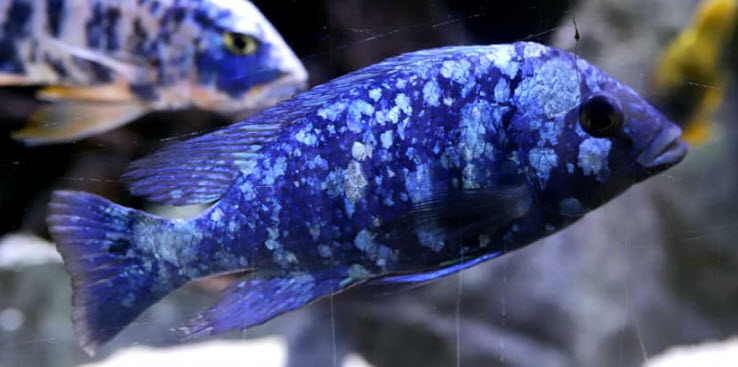
When the bin, tote, can or pail is well cycled in four to six weeks, do a 90% to 100% water change and again fill it with water. Do nothing to the sponge filter(s). After that only add very small quantities of food once a week to the bin or pail. You do not want to build up nitrates and beneficial bacteria live for years with no food.
This bin or pail will now remove the ammonia from water in 24 hours quite reliably. There will be enough bacteria and gunk in the sponge to handle any amount of chloramine the municipal water authority can throw at it. Simply put your water change water in the container when you do a water change. If you do a water change once a week this will give the filter in the “garbage can” container one week to remove the ammonia (and the chlorine). One week is plenty of time to remove the ammonia.

A Very Stubborn Myth
The myth that ammonia spikes will rapidly kill fish is simply incredibly ingrained into the hobby. The best way to illustrate that is to delve into one YouTube video.
Ben Ochart had the following sequence of events happen:
1 action: He took in a new fish that had supposedly suffered from some aggression and had tattered fins. He put it in an existing aquarium.
His conclusion: The fish was healthy and didn’t need quarantining
2 action: He had some blocked cartridge filters, so he replaced all the cartridges at the same time he added the new fish.
His conclusion: He removed most of his beneficial bacteria

3 action: He added some Fritz Maracyn antibiotic to the water in the tank with the new fish to treat the tattered fins
His conclusion: The antibiotic killed the small number of beneficial bacteria remaining
4 action: The water turned cloudy and the fish in the tank appeared to be in distress, being up at the surface and “panting”. He did a 50% water change.
His conclusion: His filter cleaning had killed off the beneficial bacteria and this was putting his fish in distress.
5 action: The next morning four large, prized fish alongside the new fish were dead. He tested the water for ammonia and it was zero.
His conclusion: He had had a sudden “unseen” ammonia spike and that had killed his fish.
6 action: He added some cycled filter media to the filters and added Fritz bottled bacteria and no more fish died.
His conclusion: He felt he made four mistakes: not quarantining, replacing the cartridges, adding the antibiotic, and not adding bottled beneficial bacteria soon enough.
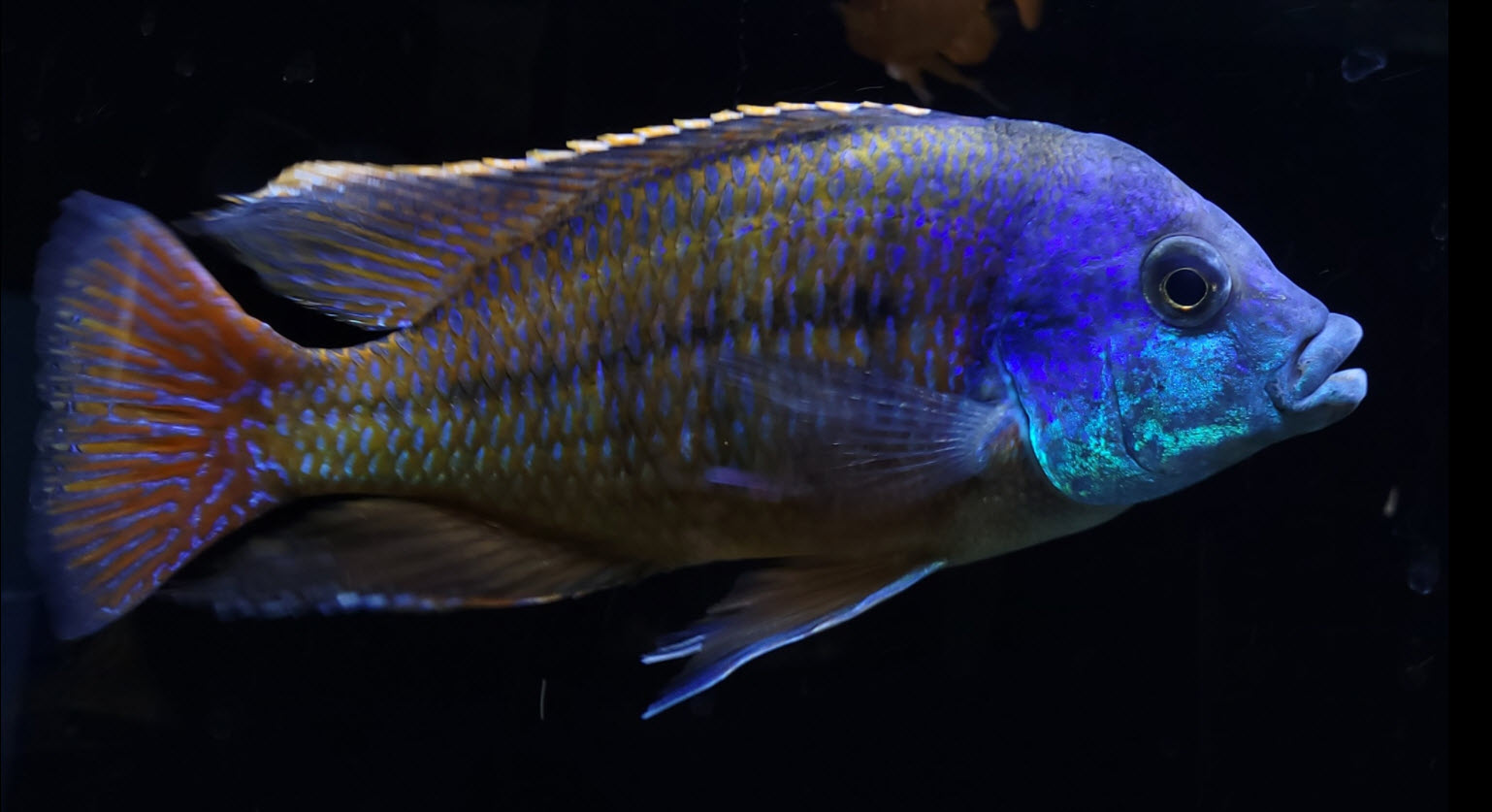
I found this whole sequence just kind of sad. It was SO preventable and Ben is such a likable guy. I felt bad for him. Losing fish like he had really hurts.
Ben made only one of the four mistakes he thought he made. Ben made two mistakes: he didn’t quarantine a fish and he put the antibiotic into the water and not into the food. The fish he added had a bacterial infection. The bacterial infection killed four of his prized fish. Simple. Easy. If he had quarantined the fish or if he had added the antibiotic to his fish food, his four prized fish would probably still be alive.
But Ben is like most hobbyists and if some fish die the first and ONLY thing that comes to his mind is “An ammonia spike killed them“. And he is going to believe this even though a much simpler explanation is staring him right in the face. Note he even added antibiotics. Yet a bacterial infection never crossed his mind.
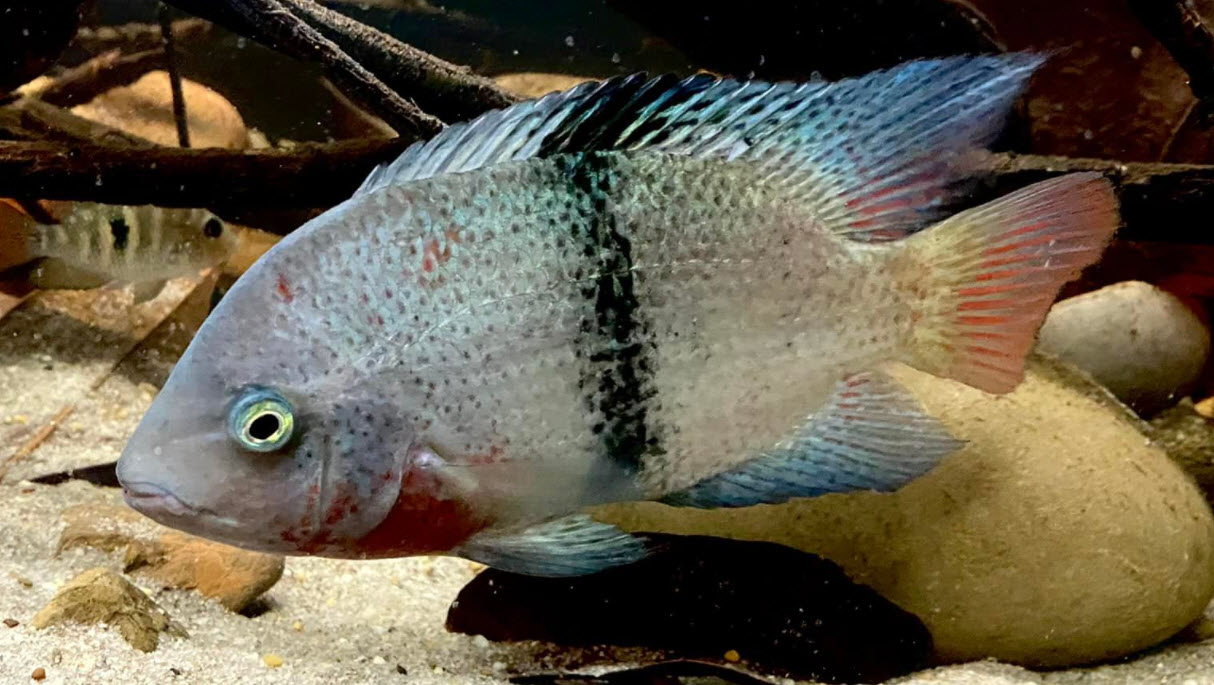
Changing all his cartridges at once was not a good idea but it had nothing to do with his fish dying. And ammonia is a slow poison that kills fish slowly over weeks. It does not kill overnight. And if it somehow did get high enough to kill the fish the spike certainly wouldn’t disappear before morning. The cloudy water was also harmless.
And cloudy water is NOT caused by ammonia. In Ben’s case it was probably just caused by the fact that the antibiotic he added to the water is an insoluble powder. Insoluble powders will result in cloudy water. And the bacterial infection just died out on its own. The bottle bacteria and cycled filter media had nothing to do with it going away.
Humans can be very stubborn about their beliefs. If the first thing which comes to mind is an ammonia spike, that is what sticks. Even when a much simpler explanation is glaringly obvious.



